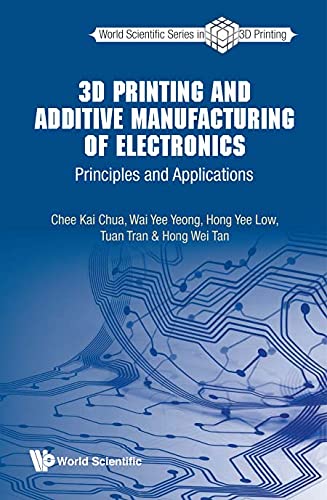Transforming the world with 3D printed electronics
SUTD - Hong Wei TAN, Hong Yee LOW and Chee Kai CHUA
NTU - Tuan TRAN and Wai Yee YEONG

In the age of digitalisation, electronics products are becoming increasingly ubiquitous. Over the past few decades, electronic products like computers, smartphones, televisions, gaming consoles and internet of things (IoT) devices have completely transformed the way we interact, live, work and play. In consumer products, the demands for customisation and miniaturisation are two major trends that place technical challenges in designing and manufacturing future electronic products.
Three-dimensional (3D) printing of electronics has attracted growing interest because of the unique advantages it offers that are not achievable by traditional electronic manufacturing processes and systems. For instance, on-demand fabrication of highly-customisable electronics, direct fabrication on a wide variety of substrates and conformal surfaces and novel device designs in three-dimensions.
Development and understanding of 3D printing of electronics require a combination of multiple disciplines, specifically material science of the functional inks, mechanical-electrical engineering for the digital manufacturing processes and computational engineering for the design of 3D printable electronic devices.
Written by contributors ranging from world leading experts and researchers from the Singapore University of Technology and Design (SUTD) and Nanyang Technological University (NTU), 3D Printing and Additive Manufacturing of Electronics: Principles and Applications is designed to be a one-stop guide for anyone interested in the 3D printing of electronics.
This book is also an effective textbook for undergraduate and graduate courses that aim to arm students with a thorough understanding of the fundamentals of 3D printed electronics.
Written to provide a comprehensive coverage on the principles and applications in 3D electronics printing for students, researchers and engineers, the book explores the various 3D printing techniques, functional materials, substrates, sintering processes, designs and simulations, applications and future outlook of 3D printed electronics. A set of designed problems at the end of each chapter provide undergraduate and postgraduate students with practice on key concepts covered.
3D Printing and Additive Manufacturing of Electronics begins with the introduction of conventional electronics manufacturing and an overview of the 3D printing of electronics. A chapter is devoted to the printing processes of the various conventional electronics techniques for printed electronics.
Four subsequent chapters are dedicated to the key components of 3D printing of electronics, which are 3D electronics printing techniques, materials and inks, substrates and processing, and sintering techniques for metallic nanoparticle inks. The book next presents a new exciting area which is gaining traction recently, namely the designs and simulations for 3D printed electronics. The last chapter is entirely devoted to the applications of 3D printed electronics, and valuable insights are provided for existing challenges and the future outlook.
This book also gives a complete and comprehensive overview of the latest technologies, methodologies and practices, as well as research and development in this sector, for industry practitioners and suppliers.
"In this book, we explore a future of fully functional electronic devices which are completely 3D printed," said Professor Chee Kai Chua, lead author and Head of Engineering Product Development at the Singapore University of Technology and Design.
"We take readers through the state-of-the-art technologies in 3D printed electronics and delve into present as well as upcoming trends that have the potential to revolutionise this sector".
To order or know more about the book, visit https://www.worldscientific.com/worldscibooks/10.1142/11773.